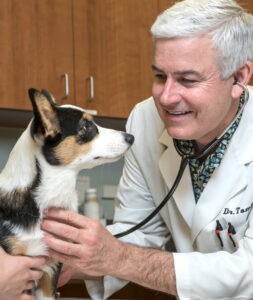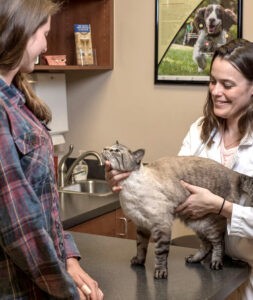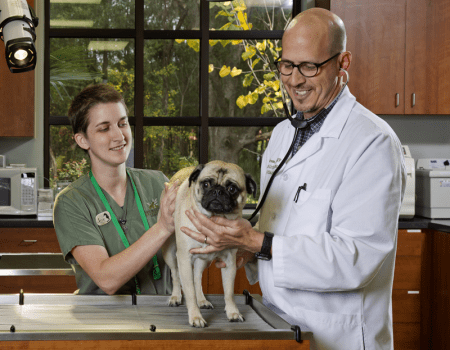Reasons Pet Vaccinations Remain Critically Important for Dogs & Cats
Importance of Pet Vaccinations for Dogs & Cats
The British Medical Journal has recognized vaccines as one of the greatest advancements in medicine due to the fact that the development of vaccines and their use is credited with saving more lives than all other medical treatments and interventions available. Not getting a disease is far better than treating it because treatments are riskier than vaccines, and successful treatment varies depending on the disease, infectious strain, and the health of the one receiving the treatments. Vaccines are equally effective in dogs and cats for preventing unnecessary illness, suffering, and even death from preventable infections such as rabies. In order to dispel some misinformation regarding vaccines, here are some factual reasons why they continue to be important in pet health care.
The Purpose of Vaccines
Vaccines reduce the likelihood of full blown infection occurring when exposed to pathogens, and therefore, none of the deadly symptoms of the devastating illnesses that vaccines are developed to prevent will occur.
In 1967, an eradication program began to get rid of smallpox infections through widespread human vaccinations. However, the first vaccine was actually developed in 1798. Most people who were children during the 1960s era have a small round vaccination scar present on their upper arms or shoulders. The total death toll of smallpox is considered to be upwards of 500 million, but vaccination protocols have now eradicated the infection to the point that children in the United States are no longer routinely vaccinated for smallpox.
Vaccines reduce the likelihood of full blown infection occurring when exposed to pathogens, and therefore, none of the deadly symptoms of the devastating illnesses that vaccines are developed to prevent will occur.
Rabies is another deadly disease that almost always results in painful death. It can be spread by humans, wildlife, and pets. A human rabies vaccine was developed by Louis Pasteur and Émile Roux in 1885. but rabies vaccines for veterinary use began before the first human trials. Nowadays, even wildlife are vaccinated to prevent rabies in high-risk areas by the dispersion of food baits that contain an oral version of the vaccine.
The Definition of Vaccines
Viruses and bacteria that cause disease are known as pathogens. Vaccines are developed by taking the infectious viruses and bacteria and modifying them to be used to help the body safely recognize them as invaders, allowing time to build up protective antibodies without actually causing disease. There are two basic types of vaccines. One is made by completely killing live pathogens and using them to make vaccines that are most often given by injection. Some oral and nasal vaccines are available. The killed pathogen type are referred to as inactivated type vaccines. The other type is referred to as live-attenuated vaccines. They take pathogens and weaken them to the point that they are not going to cause the full-blown disease process but will cause enough of an immune reaction to produce those much-needed protective antibodies.
The immune system protects humans and pets from various pathogenic infections. However, people and pets vary in how their immune systems respond. Some pathogens are so virulent that tiny amounts can make most people and pets sick. Vaccines immunize people and pets on a more even playing ground. For example, a very small percentage of people and pets may have a natural immunity to a particular viral strain. The majority will likely not. So, vaccines given to every person and pet will help them to all acquire immunity without having to get sick. Also, as viral strains mutate, they can infect those who were immune to other strains. This is why some annual vaccines such as the ones for human influenza are continually adapted and needed each year.
Vaccines Specific to Dogs
Canines may require a series of rabies vaccinations under state law. Rabies can exist everywhere in the United States, as even so-called “rabies free” areas such as Hawaii do not take into account incidents of bat rabies. The continent of Australia is said to not have rabies, but the similar bat lyssavirus does occur. Scientists believe rabies does exist in bats there, making global pet vaccination a reasonable idea.
Other common vaccinations that should begin in puppies are the combination vaccines such as DHPP that protect against distemper, hepatitis, parvo, and parainfluenza. In some areas, combination vaccines also add protection against bacterial leptospirosis. In areas where lyme disease is a concern, there is a vaccination that offers protection. There is also a canine influenza vaccine that may be helpful to some dogs in some areas.
Dog and cat vaccines are classed as core and non-core. Rabies is a core vaccine, and leptospirosis is considered non-core for dogs. However, every pet, their lifestyles, and the regions they live in must be taken into consideration. For example, leptospirosis is spread by rodents and other wildlife, so most people who have dogs that never leave the house may think it unnecessary. However, a field mouse that gets into the house and finds the food dish of a pet can leave behind the leptospirosis bacteria that can result in failed kidneys and death of the infected pet. Leptospirosis is also a zoonotic disease that can be passed from an infected dog to humans!
Vaccines Specific to Cats
Cats differ from dogs in the diseases they are most likely to acquire and the risks those diseases pose to their health and longevity. Core vaccinations for cats include protection for rabies, panleukopenia, rhinotracheitis, and calicivirus. Non-core vaccines for cats include protection for chlamydophila, feline leukemia, and bordetella. The risks of acquiring the diseases and the risks of the vaccinations should be considered when choosing the vaccines a pet should have.

Booster Shots
Some vaccines do not offer any permanent protection, while others may offer what is considered to be a lifetime of protection. Vaccines that do provide long-term protection may need to be given in several doses to build up the required immunity. The multiple doses needed to build up immunity to rabies is an example. The bordetella vaccine, also known as kennel cough, is only good for six months to a year. The bordetella vaccine was once recommended only for pets placed in public kennels; however, the landscape of pet care and interaction with other pets now includes groomers, dog parks, and even doggy daycare, making the annual or semi-annual vaccination much more valuable to consider. Some kennels will not accept pets that are not vaccinated for bordetella.
The Future of Vaccines
The future of vaccines includes ones used in therapeutic treatments known as therapeutic vaccines. One currently exists as an immunotherapy technology to treat canine melanoma. All vaccines have known risks for pets, but the risk of the diseases often far outweigh the much smaller risks of having issues with the vaccines. Other therapies are also available for use as preventatives, such as heartworm medication to prevent mosquito-borne heartworm disease.
All vaccines have known risks for pets, but the risk of the diseases often far outweigh the much smaller risks of having issues with the vaccines.
Every pet should have a trusted veterinarian partnering with their owner to manage their care, and that care should include vaccinations and preventative therapies to increase their longevity, resistance to disease, and overall quality of life.


